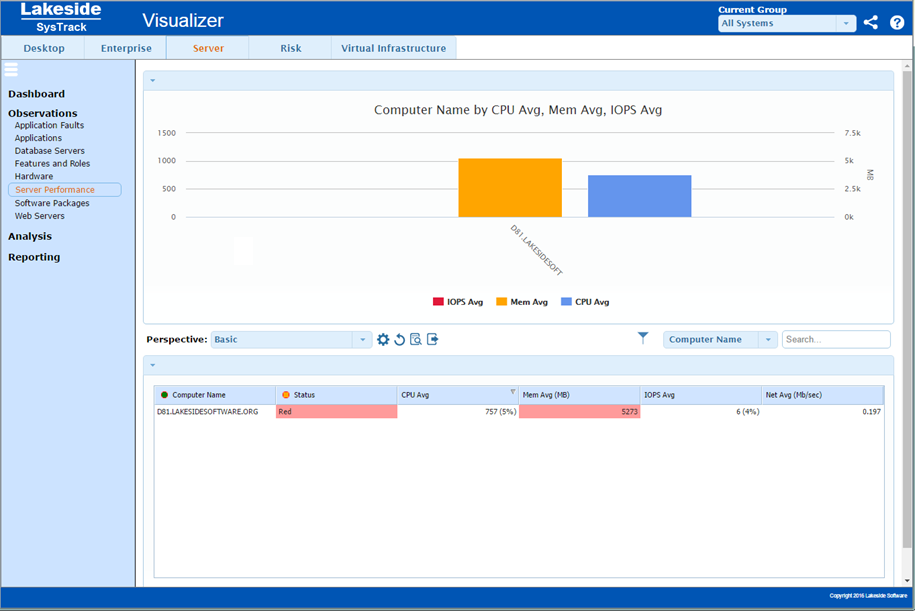View the Server Performance Dataset
The Computer Performance dataset provides insight into how servers are used and how much of their available compute resources are effectively used in delivering applications to users. A visualized server may represent a physical server or a virtualized server delivered from a cloud computing environment.
Each computer in the visualized environment is statistically analyzed and presented in this dataset with key performance indicators that may be helpful in planning the IT environment. These statistics help the IT architect to understand the resources available and used, and how well the available resources match the needs of the users of the server to deliver an optimized environment in the most cost effective way. Each perspective offered is designed to showcase this behavior as it may influence the delivery of IT resources using the least cost model that avoids reducing the productivity of the people that use the server.

Server Performance Dataset Perspectives
Basic
This perspective offers a high level view of server performance for systems in the visualized environment. For each system, average resource demand for CPU, memory, I/O, and network are shown.
CPU Technical Analysis
This perspective offers deeper technical details regarding the use of processor resources on each server.
Memory Technical Analysis
This perspective offers deeper technical details regarding the use of memory resources on each server. Statistical data such as the maximum and standard deviation of the workload may be helpful in proper and efficient sizing.
I/O Technical Analysis
This perspective offers deeper technical details regarding the use of I/O resources on each server. Statistical data such as the maximum and standard deviation of the workload may be helpful in proper and efficient sizing.
Network Technical Analysis
This perspective offers deeper technical details regarding the use of network resources on each server. Statistical data such as the maximum and standard deviation of the workload may be helpful in proper and efficient sizing.
Browser Usage
This perspective provides detailed usage information about how much time the user community spends in internet browser applications. Browser usage data is divided into graphical and non-graphical usage subsets, and related information about login time, active time, and graphical application time is also made available.
Network Technical Analysis
This perspective offers technical details regarding the use of network resources on each server. Statistical data regarding the maximum and standard deviation of the workload may be helpful in proper and efficient network sizing.
System Resource Footprint
Servers that consume the most resources have the greatest impact to the IT infrastructure overall (especially when virtualized). These servers require the greatest amount of CPU and memory.
On This Page